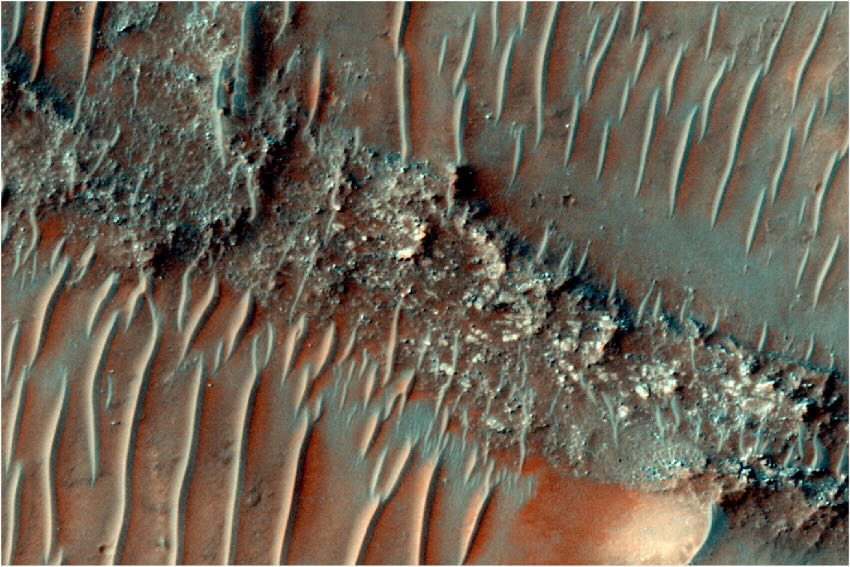New evidence for past water on Mars has emerged from UK Space Agency-supported research identifying more than 15,000 kilometers of ancient dry riverbeds crisscrossing the Martian surface, particularly in a region long overlooked in the search for Martian water.
The discovery centers on a detailed investigation of sinuous fluvial ridges in the Noachis Terra region of Mars. These inverted channels were likely formed as rivers deposited sediment, which hardened over time and were eventually exposed through erosion.
Investigating Water on Mars
Open University PhD student Adam Losekoot presented the findings at the Royal Astronomical Society’s National Astronomy Meeting, held this week in Durham, England.
With data from several orbiters and landers already monitoring the Red Planet, the team focused their analysis on three instruments currently in orbit: the Context Camera (CTX), the Mars Orbiter Laser Altimeter (MOLA), and the High Resolution Imaging Science Experiment (HiRISE). These complementary data sources allowed for a detailed mapping of the ridge systems in Noachis Terra.
The inverted ridges span the region’s landscape, suggesting that flowing water and precipitation were once widespread on ancient Mars. The team’s analysis cataloged their morphology, locations, and lengths. Some ridge systems extend for hundreds of kilometers and rise tens of meters above the surrounding terrain, while others are shorter and more fragmented. Despite these variations, the distribution implies they formed under stable surface conditions, likely driven by sustained precipitation over a geologically significant period.
“Our work is a new piece of evidence that suggests that Mars was once a much more complex and active planet than it is now, which is such an exciting thing to be involved in,” Losekoot said.
Noachian-Hesperian Transition
The researchers concluded that these features likely date back to the Noachian-Hesperian transition period, around 3.7 billion years ago—a time marked by dramatic geological and climatic shifts on Mars. Their findings suggest the planet may have supported stable surface water long enough to form the extensive ridge networks.
During the Noachian period, Mars was heavily bombarded by asteroids and meteorites, creating massive impact craters, while volcanic activity contributed to shaping the atmosphere. The subsequent Hesperian period saw the Red Planet shift toward the colder, drier climate we see today, marked by intense volcanic activity and catastrophic flooding.
An Eye on Noachis Terra
Other areas of Mars, especially those with extensive valley networks, have historically received more scientific attention in the search for ancient water. These networks resemble erosional features shaped by rainfall and runoff on Earth, making them compelling targets. In contrast, Noachis Terra—home to relatively few such valleys—had largely been overlooked.

“Studying Mars, particularly an underexplored region like Noachis Terra, is really exciting because it’s an environment that has been largely unchanged for billions of years. It’s a time capsule that records fundamental geological processes in a way that just isn’t possible here on Earth,” said Losekoot.
One of the study’s most important conclusions is that Noachis Terra’s warm and wet period must have persisted longer than previously thought.
The sheer length and extent of the ridges suggest Mars experienced a sustained period of favorable conditions, challenging the prevailing view that the planet was mostly cold and dry, punctuated only by brief episodes of warming and ice melt.
Ryan Whalen covers science and technology for The Debrief. He holds an MA in History and a Master of Library and Information Science with a certificate in Data Science. He can be contacted at ryan@thedebrief.org, and follow him on Twitter @mdntwvlf.
